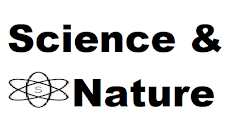In a discovery that has more of the ring of science fiction than of hard science, one Nobel Prize-winning physicist has reawakened a stunning theory: our entire universe might be contained within a black hole. And now, with the breathtakingly clear vision of the James Webb Space Telescope (JWST), some scientists think we may at last be glimpsing telltale hints that confirm this mind-bending possibility.
A Theory at the Edge of Reality
The idea isn't new. Physicists have long wondered whether black holes—those enigmatic corners of space with gravity so intense not even light can escape—may be more than cosmic cul-de-sacs. Indeed, some have hypothesized they may be doorways, or even nurseries for new universes.
One of the strongest voices revisiting this concept is that of Dr. Nikodem Popławski, a theoretical physicist whose research has looked at how torsion and spin at the quantum level could enable black holes to create "baby universes." While yet to win his own Nobel, his work draws on the achievements of Nobel prize-winning physicists such as Roger Penrose and Stephen Hawking.
Recently, while giving a speech, Popławski boldly asserted:
"Conditions within a black hole might be similar to those at the start of our universe. It's not impossible that our universe itself started within a black hole—and remains there."
James Webb Telescope: Looking Back
Come the James Webb Space Telescope—the most capable observatory ever to go into space. Built to see farther into the past than any telescope ever built, JWST can detect light from mere hundreds of millions of years after the Big Bang.
But rather than the neat start that theorists expected with their standard cosmological models, JWST has detected great galaxies and well-evolved structures emerging astonishingly early in the history of the universe—far too early, at least according to existing theories.
These discoveries have sparked intense debate in the physics community. Some researchers argue that the anomalies seen by JWST could support alternative models of the universe, including the black hole origin hypothesis.
What If It’s True?
If our universe truly is the interior of a black hole, it would radically alter our understanding of physics, time, and space. It would mean that:
The Big Bang was not the start, but a metamorphosis—a bounce from an earlier cosmic condition.
Our "expanding universe" is the interior of a black hole, expanding from the inside out as a result of the extreme warping of spacetime.
Time and causality as we experience them could function differently at the periphery of this system—potentially being responsible for such phenomena as dark energy or the cosmic horizon problem.
But even with intriguing hints, most physicists warn against leaping to conclusions. "The James Webb data is astounding," says Dr. Priya Natarajan, a Yale astrophysicist who has no connection with the black hole universe theory. "But extraordinary claims still have to be backed by extraordinary evidence."
So, Are We Living Inside a Black Hole?
The response, at least for now: maybe—but not yet established. While the hypothesis is still only a theory, it has received renewed attention due to the groundbreaking observations of the James Webb Telescope. As additional information becomes available, we might edge closer to solving one of the greatest questions of all: Where—and what—is our universe, actually?
Until then, the notion that we live within a black
hole continues to be one of the most head-spinning options in contemporary
physics—a notion at the edge of science and the universe unknown.




.jpg)
0 Comments